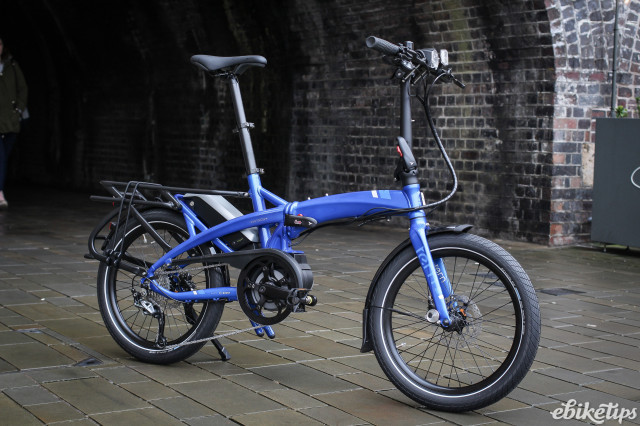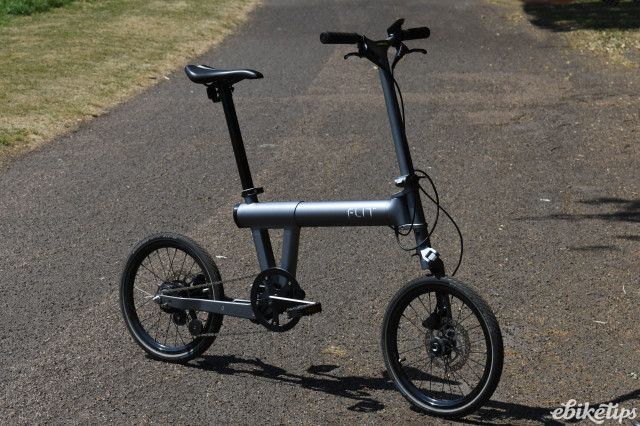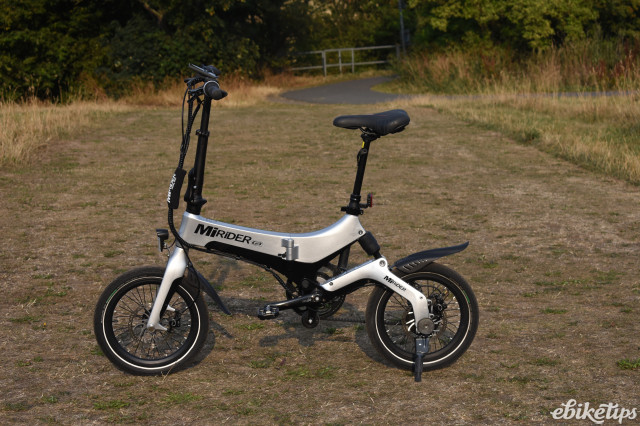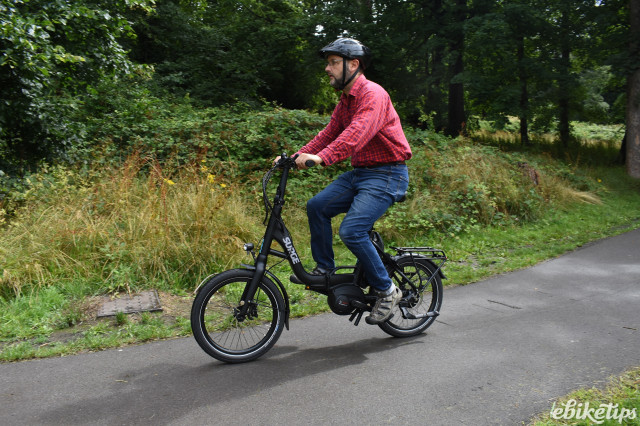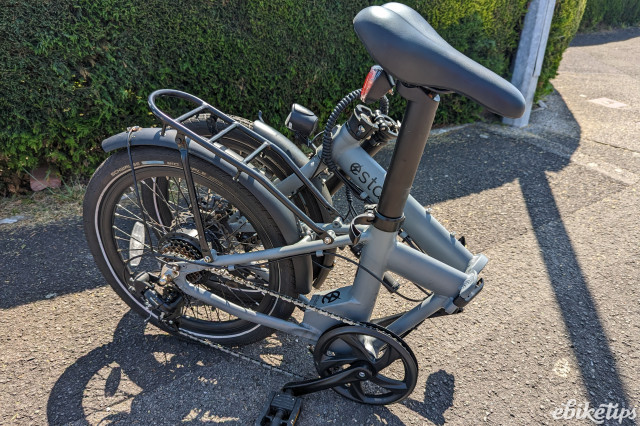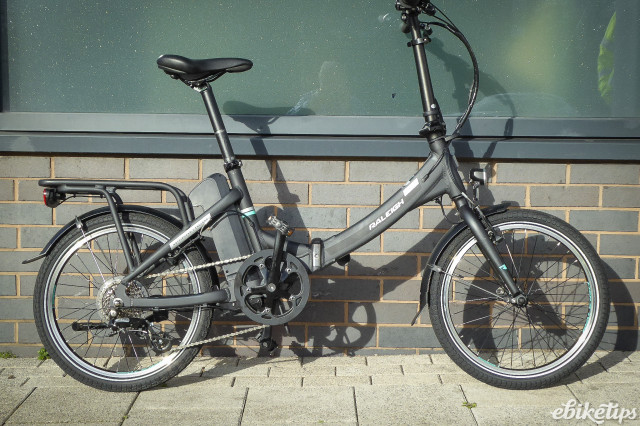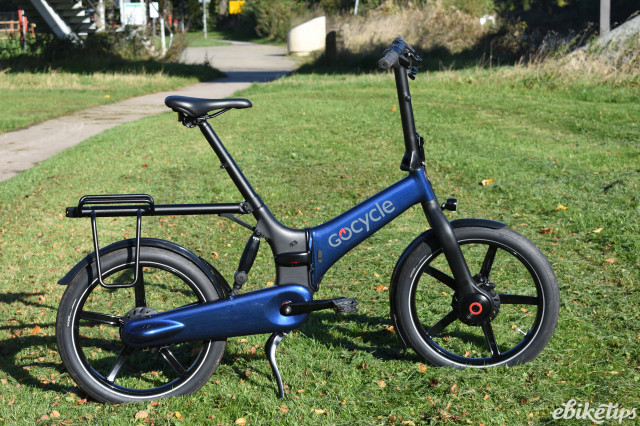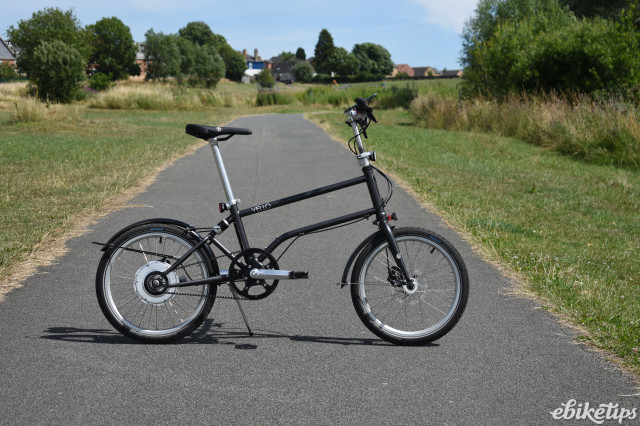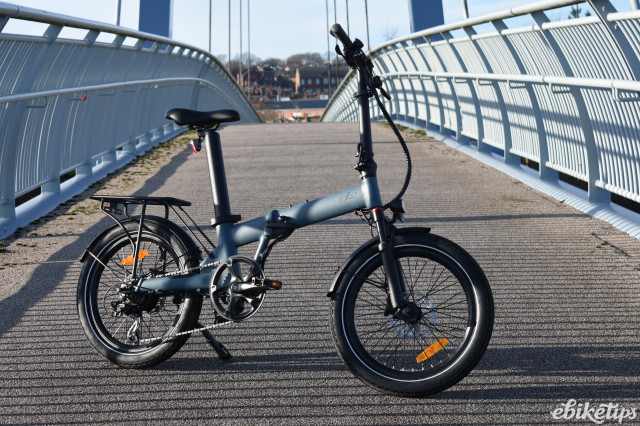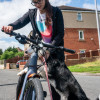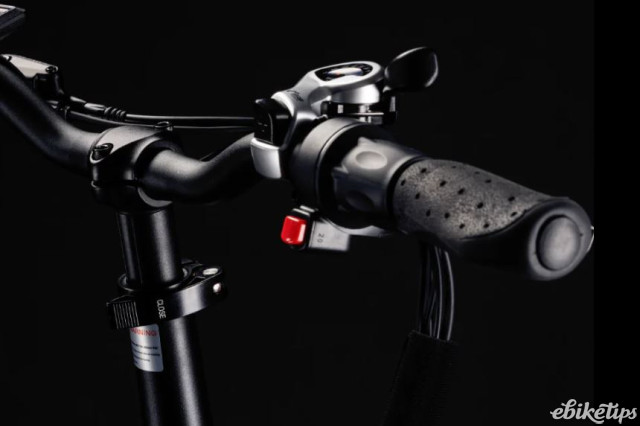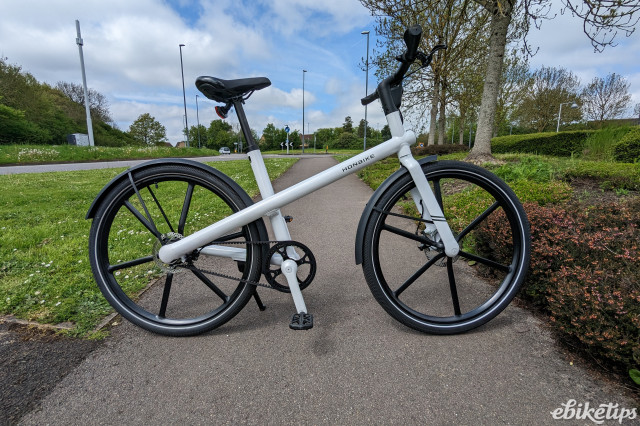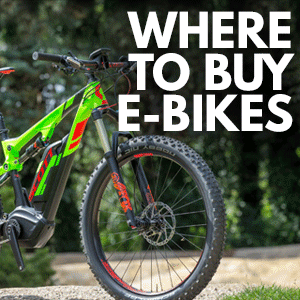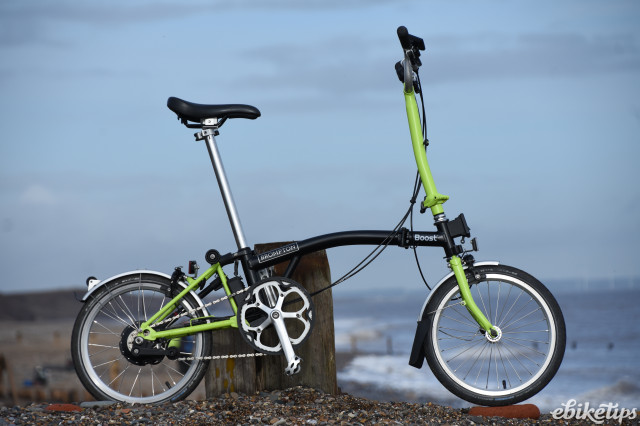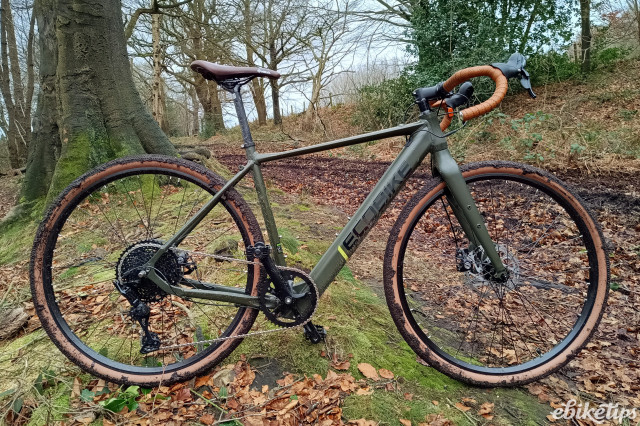If you’re after something that’s fun to ride but also a good deal easier to lug around than a full-sized e-bike, then folding electric bikes are absolutely the place to start. They often look similar to their unassisted counterparts, but tend to weigh a little bit more due to the motor and battery.
Folding e-bikes are ideal for people who want to start riding to work but perhaps use the bus or train as part of the journey as well. It is however worth checking the policies of local operators before you commit to this though. They may have size limits or other restrictions.
Alongside being portable, folding e-bikes are also easier to store, which can make them a good option for people living in flats or without much storage space.
There are a few different kinds of electric folders. Some focus more on portability and sacrifice a little bit of ride quality, while others try to match the ride quality and feel of a bigger bike but in a smaller package. It is worth mentioning that if you’re on a tight budget, we’ve also got a guide to the best electric folding bikes under £2,000.
You’ll tend to find the lighter, smaller folders have 16” wheels and the bigger ones have 20”. Hub-driven motors also reign supreme - although we are seeing more mid-motor options. Hub drives are way more common though because they're lighter.
In general, electric folding bikes are a great urban companion, particularly in flatter areas, but that doesn’t mean they’re not good for quick leisure rides on country lanes too.
Best electric folding bikes 2024
- Tern Vektron Q9 - best overall | Buy for £3,000 from Surge Bikes
- FLIT - best lightweight electric folder | Pre-order for £1,999 from FLIT
- MiRider One GB3 - best under £2,500 | Buy for £2,495 from MiRider
- Surge Traveler P5e - best hub gear electric folder | Buy for £3,499 from Surge Bikes
- Brompton Electric P Line - best for big budgets | Buy for £3,695 from Brompton
- Estarli e20.7 Comfort Pro - best for taking on holiday | Buy for £1,480 from Estarli
- Raleigh Stow-E-Way - best budget electric folder | Buy for £1,199 from Halfords
- Gocycle G4 - best full-size feel | Buy for £3,399 from Willow E-Bikes
- Vello Bike+ - best belt driven electric folder | Buy for £3,390 from About the Bike
- Eovolt Afternoon - best 20" wheel electric folder | Buy for £1,699 for Winstanleys Bikes
1. Tern Vektron Q9 - £3,500 (best overall)
Something of a rarity for an e-folder, the Tern Vektron Q9 comes equipped with a mid-drive motor as well as bringing a few other full-size e-bike qualities to the table. The motor used is a Bosch Active Line Plus which provides up to 50Nm of torque – more than enough for most urban environments. The battery is also large for the bike’s size, at 400Wh, which our reviewer got 60-70km out of on flat terrain.
It may be easier to think of the Vektron Q9 as a micro-cargo bike, with space on the rear rack for a YEPP child seat, and panniers for example. It’s like a smaller Tern GSD model in terms of practicalities, with the added benefit it folds into a neat package. It is quite heavy for a folder at 21.9kg, but it can be stored folded or vertically if you’re stuck for space.
For more detail, read our review of the Tern Vektron Q9.
2. FLIT – from £1,999 (best lightweight electric folder)
Since we reviewed the FLIT-16, the brand has launched a new model: the M2. It shares the same philosophy that made the FLIT-16 popular with the emphasis on keeping the weight down.
Ideal for train commuters who want something to help propel them those last few miles to the workplace, the 14kg FLIT M2 is one of the lightest electric folders out there that doesn’t compromise on performance. It’s single-speed and hub-motor powered, yes, but the Bafang motor does a stellar job even on reasonable hills. The M2 is currently on pre-order for summer 2024, and you can still secure early bird pricing of £1,999 compared to the standard price of £2,499.
For more detail, read our first ride review of the FLIT M2 and our full review of the FLIT-16.
3. MiRider One GB3 - £2,495 (best under £2,500)
The MiRider One GB3 is the newest addition to the One range, and impressed us just as much as their 2021 model. It’s the first MiRider to come with gears – three, to be precise, and a fancy display unit on the handlebars.
Perhaps the biggest upgrade is the hydraulic disc brakes, which go some way towards explaining the big price jump from the other MiRider One models. It’s 19.1kg in weight so an unlikely candidate for everyday multi-modal commuting for most of us, but it’s compact enough to fit in a car boot or the back of a caravan for some enjoyable leisure rides on top of day-to-day riding.
For more detail, read our review of the MiRider One GB3.
4. Surge Traveler P5e - £3,499 (best hub gear electric folder)
Although the first bike for Surge, the Traveler P5e is seriously impressive. It features Enviolo hub gearing and a Gates belt drive, so it’s ideal for those looking for something relatively low maintenance yet robust.
The frame and components might not look like anything special, but that has its benefits – you’ll be able to easily source parts. The actual drive system is also among the better Bosch offerings: Performance Line, paired with a 500Wh PowerPack battery for plenty of range.
For more detail, read our review of the Surge Traveler P5e.
5. Brompton Electric P Line - £3,695 (best for big budgets)
The latest addition to the electric Brompton range is the Electric P Line - and there is now also a 12-speed option to make the bike even more enticing. It follows the introduction of the non-electric P Line last year and is essentially an upgrade on the Brompton Electric M6L. The main difference between the two is the introduction of a smartphone app.
While this may not seem like a big deal, it means you no longer have to reach over the handlebars to press the assist buttons on the battery. Instead, you have the power in your hands. The P Line comes with a 312Wh battery pack that’s easily removable and a front wheeled hub motor. It’s also Brompton’s lightest e-bike. It weighs 13.3kg with the battery removed but including the optional ‘Roller Frame’ - so it’s lighter still if you go for the Urban model without the rack.
For more detail, read our review of the Brompton Electric P Line.
6. Estarli e20.7 Comfort Pro - £1,480 (best for taking on holiday)
The Estarli e20.7 is not just great value, it’s also incredibly stable and bypasses a lot of the typical handling issues smaller wheeled bikes often exhibit. With wide Schwalbe tyres and the extra weight from the motor and battery, our reviewer found the e20.7 to be enjoyable and responsive in urban areas - and it's had a few updates since then.
The e20.7 can do everything from bumbling around in town to smashing it through traffic – and it’s easy to get the hang of even if you’re not a seasoned rider. The hub drive motor (which has been upgraded since our review) is paired with a 259Wh battery, which sits within the seat post.
For more detail, read our review of the Estarli e20.7 Original Pro.
7. Raleigh Stow-E-Way - £1,199 (best budget electric folder)
The Raleigh Stow-E-Way is one of the larger folding bikes on this list. It may be better to think of it as, in the words of our reviewer, “an e-bike that folds” rather than a folding e-bike. It folds in the middle and 20” wheels do make it a little bulky, but that doesn’t mean it's not easy to cart around.
The Stow-E-Way comes with a quality electric assist system from Trans-X, a well-respected manufacturer. This is paired with a 245Wh battery, LED lights, mudguards and a kickstand. It’s also equipped with a frame integrated rack for carrying some essentials.
For more detail, read our review of the Raleigh Stow-E-Way.
8. Gocycle G4 - £3,399 (best full-size feel)
Previously dubbed ‘the iPhone of e-bikes’, the Gocycle pairs excellent performance with sleek yet funky looks – as you’d expect from a former McLaren automotive designer. Unlike some other e-folders, the Gocycle has been designed from scratch and uses lots of proprietary tech including the ‘Pitstop’ mag wheels which employ single-sided forks (making punctures easier to deal with).
Reviewers and customers alike say the Gocycle G4 is one of the most fun e-bikes you can ride. A beefier motor than previous models eats up hills and even though the wheels are small, the grippy tyres inspire cornering confidence. The frame is a blend of aluminium, carbon fibre and magnesium, depending on whether you go for the G4 or G4i model. We found it to be stiff enough for excellent power transfer.
For more detail, read our review of the Gocycle G4.
9. Vello Bike+ - £3,390 (best belt driven folder)
If you’re after a folding e-bike with regenerative braking then this is the one for you. It’s operated by a Zehus all-in-one motor system in the rear wheel which incorporates the battery. It is also available with a unique two-gear transmission in the bottom bracket where you change by kicking a button in the crank axle. With this Schlumpf Mountain Drive, we found it could conquer 15% hills with ease.
Once you’ve figured out where the pedals need to be, folding it is easy and it’s rather compact with a folded size of 81 x 37 x 57cm. This makes the Bike+ a great option for those who use public transport as part of their journey.
For more detail, read our review of the Vello Bike+.
10. Eovolt Afternoon - £2,199 (best 20” wheel electric folder)
The Eovolt Afternoon sits in the middle of the brand's range, both in terms of size and price. With 20” wheels it's one of the larger electric folders on our list, but what it lacks in portability it makes up for in ride quality. It’s one of the few electric folders to come with front suspension, which you may or may not see as a welcome addition. It’s also equipped with Spanninga lights, a kickstand and a 25kg rear rack.
The 2022 version that we tested boasted a rather large 504Wh battery. While this has since been reduced to 378Wh, Eovolt reckon this hasn't siginficantly compromised the bike's range thanks to the introduction of torque sensing power delivery to improve efficiency. The 2.4” tyres also open up a world of canal towpaths and fire roads for those who feel restrained by tarmac. It’s not as compact or light as other e-folders, but certainly takes up less room than a full-sized bike and can be transported in the car.
For more detail, read our review of the Eovolt Afternoon.
How to choose the best electric folding bike
How far do the best electric folding bikes go?
The battery range of an electric folding bike varies depending on a number of factors: the battery capacity, rider weight, terrain, weather and gear choice. If you ride in a headwind up a 10% incline, you’ll see a much reduced range compared to riding on the flat with no wind. Most folding electric bikes now use batteries between 140Wh and 400Wh, with most offering about 30 miles of range on average from each charge - but as we say, this can differ substantially depending on the factors above. For more info, take a look at our feature, Range anxiety: how to get the most from your e-bike battery.
Do you have to pedal an electric folding bike?
Yes, you do have to pedal an electric folding bike. Why? Because in order to be classed as an electrically assisted pedal cycle (EAPC) in the UK, the assistance can only activate as you pedal. You might however find some models don’t use a torque sensor to determine how much power the motor should provide, which means you can quite literally tap the pedals for the full benefit. More expensive models come with torque sensors to determine the correct level of assistance required given your power output.
Are electric folding bikes heavy?
Electric folding bikes don’t all weigh the same. Some weigh as little as 13kg, but you can also find bikes with large batteries that weigh twice as much, so there is big variety. A non-folding electric bike might weigh around 20kg, but the biggest draw with folders is that they are compact and easy to store, as well as being portable for use on public transport.
How do folding electric bikes fold?
The most common is the ‘fold in half’ style, where the frame hinges in the middle and the seatpost and handlebar post fold down. This is pretty quick and easy, but often results in a bigger folded package than other designs.
The main other type of design is where the frame hinges in two places. By its very nature this is a little more complicated to fold, but generally produces a smaller package than a ‘bi-fold’. The Brompton is the classic example of this and its quick, compact and secure fold is an absolute classic of bike design. The electric version retains the same superb mechanism.
What size of wheels do electric folding bikes use?
There are two main ‘families’ of wheel sizes on folders and electric folders, grouped by the approximate diameter of the wheel plus the tyre: 16” and 20”. 16” wheels are chosen to make for a more compact fold and to cut weight, with the downsides being the extra rolling resistance of a more sharply-curved tyre (compared to larger tyres of an equivalent design) and rather more sensitive handling.
Conversely, folders with 20” wheels mean a larger and usually heavier folded package, but they may produce a more efficient, comfortable and predictable ride. For carrying on public transport, you might find 20” wheels more of a struggle to get on a train luggage rack, to give one possible drawback.
Small wheelers are easier to pedal up to speed quickly compared to larger ones, but less efficient at maintaining speed over longer distances, pedalling steadily at a consistent pace. This is another reason they are so popular as ‘start/stop’ machines for nipping through city traffic.
What type of motor is most common on electric folding bikes?
Unlike on larger e-bikes where mid-drives are common (particularly when you move above the £1,500 price point), hub motors are the default on folders. That’s simply because these can be made lighter than most mid-drives, and are less likely to get in the way of the fold.
Batteries are often smaller in capacity too, to keep weight down and to help simplify the fold. The battery sizes on our recommended selection of e-folders are pretty typical, mostly spanning 150Wh to 400Wh. On full size e-bikes a typical capacity is 300-625Wh, with options for dual battery systems meaning 1,250Wh is possible. Of course you can always buy a spare battery for an e-folder and carry it with you to extend your range.
